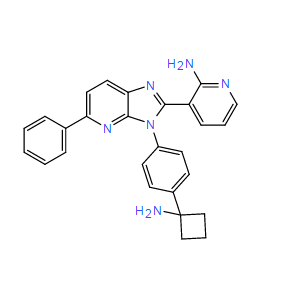| In Vivo: |
In a mouse pharmacokinetic study, (po at 100 mg/kg, iv at 5 mg/kg), ARQ-092 (Compound 21a) shows an oral bioavailability of 23%. ARQ-092 results in 99%, 95% and 58% reductions in p-Akt (S473), p-Akt (T306) and p-PRAS40 (T246), respectively, after tumor-bearing mice are treated with 100 mg/kg po. The inhibition of phosphorylation is sustained at eight hours.The plasma concentration of ARQ-092 at one hour is 2.1 μM and decreased to 0.26 μM at 8 hours, while in the tumor, the concentration is 21.0 μM at one hour and 9.6 μM at 8 hours[1]. To determine the effects of ARQ-092 on cardiac function, echocardiographic analysis of SHP2+/+ and SHP2Y279C/+ littermates is conducted, either in the presence of orally administered vehicle or ARQ-092 (100 mg/kg/day), at 12, 14, and 16 weeks of age. By 12 weeks of age, SHP2Y279C/+ mice show significant left ventricular hypertrophy, as indicated by decreased chamber dimension and increased posterior wall thickness compared with those of littermate controls; hypertrophy in these mice continued to progress over the 4 week time period. Treatment of the SHP2Y279C/+ mice with ARQ-092 normalizes the hypertrophic cardiomyopathy (HCM) phenotype as early as 2 weeks following treatment, with levels comparable to those in SHP2+/+ at this time point[2]. |






















